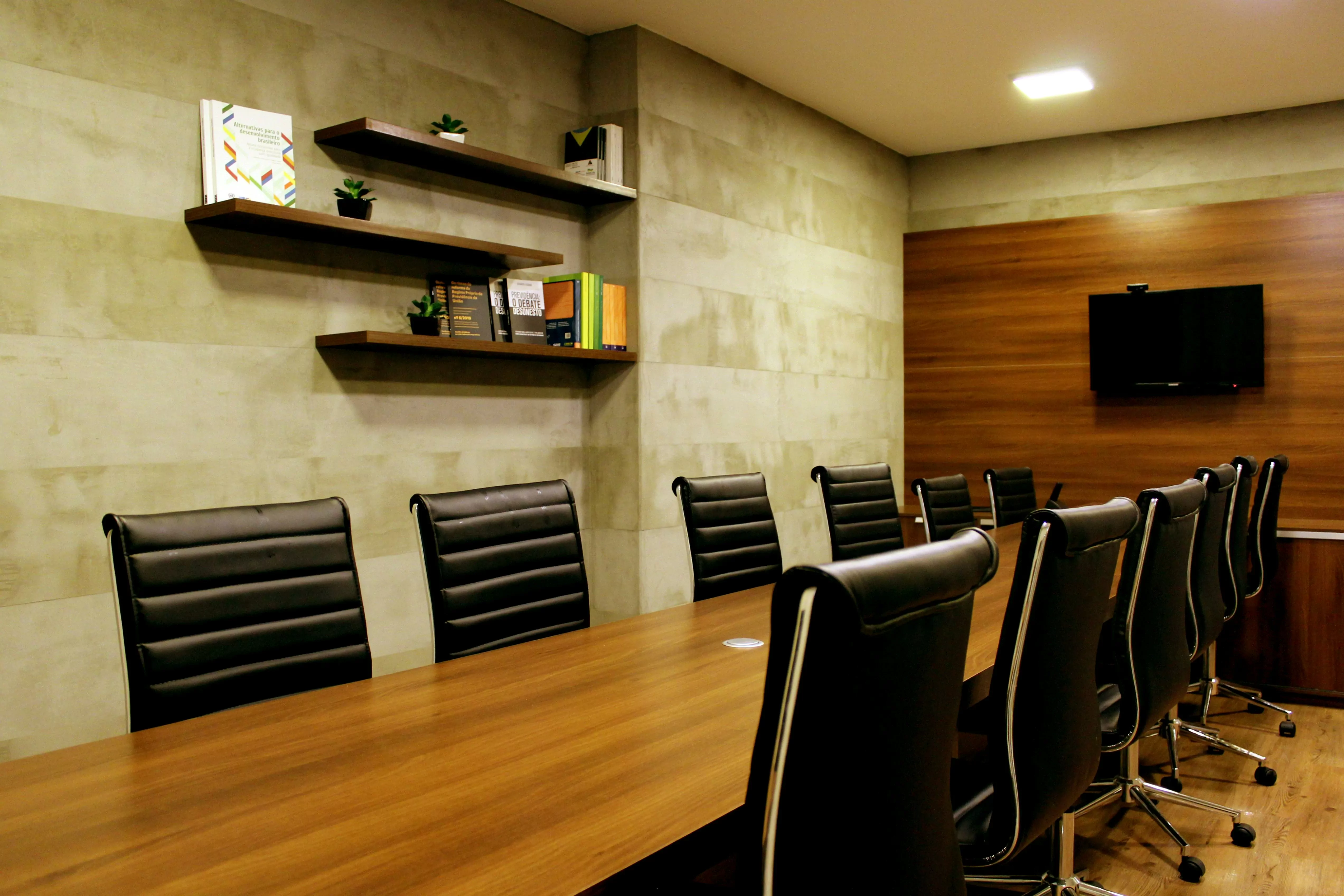How to Choose the Right Conference System for Your Meeting Room Size

Selecting the right conference system for your meeting room isn’t just about sound — it’s about ensuring clear communication, seamless collaboration, and a professional meeting experience for everyone in the space. Whether you’re equipping a small huddle room, a mid-sized boardroom, or a large conference hall, the system you choose must align with the room’s size, layout, and usage needs.
A setup that works perfectly in a 6-person meeting room may struggle to deliver consistent audio coverage in a 40-seat training hall. Likewise, investing in an overly complex system for a small space can waste both time and budget. Understanding how room acoustics, microphone coverage, speaker placement, and control interfaces scale with room size is key to making the right decision.
This guide breaks down how to match your conference system design to different room types — helping you find the perfect balance between clarity, flexibility, and cost-efficiency, no matter the size of your space.
In this article, we’ll help you understand how room dimensions, seating arrangements, and audio coverage impact your choice of conference system and conference microphones.
Why Room Size Matters When Choosing a Conference System
When selecting a conference system, room size directly affects sound quality, microphone coverage, and participant experience. The larger the space, the more complex the acoustic challenges become — including sound reflections, uneven volume levels, and potential feedback.
In a small meeting room, participants are seated close together, so a single tabletop microphone or soundbar might be enough to capture every voice clearly. But in a medium or large conference room, voices travel farther and sound can become uneven, especially if microphones are poorly positioned or insufficient in number.
Room size also influences speaker placement and amplification power. Smaller spaces require minimal amplification to avoid echo, while larger rooms need distributed ceiling or wall speakers to ensure consistent sound throughout the area. Similarly, the number and type of microphones — whether gooseneck, boundary, or wireless units — must scale with the room’s layout and the number of active speakers.
In short, room size determines not only how much equipment you need, but also what type of technology will deliver the best performance. A well-matched system balances coverage, clarity, and simplicity — ensuring every participant, whether in person or remote, can hear and be heard without distraction.
Room size affects:
- The number of microphones needed
- The power and coverage of your audio equipment
- The type of system (wired or wireless)
- Acoustic treatment and feedback control
Getting it wrong could mean weak sound, limited communication flow, or an overcomplicated setup.

Small Meeting Rooms (Up to 6 people)
Small meeting rooms — often called huddle spaces — are designed for quick discussions, brainstorming sessions, or hybrid meetings with remote participants. These compact areas typically accommodate up to six people, so the focus should be on simplicity, clarity, and ease of use rather than complex, high-powered systems.
A soundbar-based conference system or an all-in-one speakerphone with a built-in microphone array often works best for this setup. These devices combine essential audio components into one unit, reducing cable clutter and simplifying daily operation. In many cases, they also integrate directly with video conferencing platforms such as Zoom, Microsoft Teams, or Google Meet — making them ideal for hybrid communication.
Because of the smaller room size, acoustic treatment (like wall panels or soft furnishings) can help absorb reflections and prevent echo, even without extensive soundproofing. Wireless connectivity and plug-and-play USB options are also beneficial for users who frequently switch laptops or conferencing platforms.
When planning a system for a small meeting room, prioritize voice clarity and user convenience. A single high-quality microphone and well-placed speaker are usually sufficient to ensure everyone can participate comfortably, without technical distractions or uneven sound.
Why it works: 🔹Easy to manage 🔹Cost-effective 🔹Minimal wiring with excellent clarity in close-range environments
Recommended Setup: 🔹 Compact wired conference system 🔹 4–6 tabletop conference microphones 🔹 Integrated speaker unit or small PA support
Ideal for: Startups, huddle rooms, small team discussions

Medium-Sized Boardrooms (6–15 people)
Medium-sized boardrooms are where important discussions, client meetings, and strategic planning sessions often take place — which means the conference system must deliver professional-grade audio clarity and reliability. In these spaces, participants are seated farther apart, and multiple people may speak simultaneously, so microphone coverage and even sound distribution become critical.
A good setup for this room size typically includes multiple boundary or gooseneck microphones placed evenly across the table to ensure every participant’s voice is picked up clearly. For flexibility, wireless microphone units can also be used, especially if the room layout changes frequently or includes presentations away from the table.
To maintain consistent audio coverage, ceiling or wall-mounted speakers should be strategically installed to avoid dead zones. A DSP (Digital Signal Processor) helps manage echo cancellation, automatic gain control, and equalization — optimizing audio performance without manual adjustment.
Integration is another key consideration. Many medium-sized boardrooms benefit from centralized control systems, allowing users to adjust volume, mute microphones, or start video calls from a single touchscreen interface. Compatibility with conferencing platforms like Zoom Rooms or Microsoft Teams Rooms enhances the user experience further.
Overall, a medium-sized boardroom requires a balance between scalability, professional audio quality, and intuitive operation. The goal is to ensure every meeting runs smoothly — whether it’s a local discussion or a high-stakes virtual conference.
Recommended Setup: 🔹 Wireless or hybrid conference system 🔹 Delegate + chairman conference microphones 🔹 Ceiling or wall-mounted speakers 🔹 Feedback suppression DSP (Digital Signal Processor)
Why it works: 🔹Flexible mic placement 🔹Scalable and neat cabling 🔹Clear communication across longer tables or U-shapes
Ideal for: Corporate boardrooms, SME meetings, remote conferencing setups

Large Conference Halls (15+ people)
Large conference halls are built for corporate presentations, training sessions, seminars, and hybrid events — environments where audio performance and system scalability are absolutely essential. These rooms typically host more than 15 participants and often require advanced conference systems capable of handling multiple microphones, large speaker coverage, and seamless integration with visual and streaming equipment.
In these spaces, distributed sound reinforcement is key. Multiple ceiling or wall-mounted speakers should be positioned to deliver consistent sound levels throughout the hall. A zoned audio setup, managed through a Digital Signal Processor (DSP), helps balance output between different seating areas and ensures that both presenters and audience members can hear clearly without feedback or distortion.
When it comes to microphones, wireless handheld, lapel, or delegate systems are preferred for flexibility. These allow multiple speakers, panelists, or audience participants to interact without being restricted by cables. In larger halls or auditoriums, automatic microphone mixing technology can also be valuable, intelligently managing active channels to maintain clarity even when several people speak in succession.
For complex installations, integration with AV control systems (like Crestron, Extron, or AMX) provides unified control over audio, video, and lighting — simplifying operation for technical staff and presenters alike. Video conferencing, recording, and live streaming features can also be added to support hybrid or remote participation.
Ultimately, a large conference hall system should prioritize power, scalability, and intelligibility. The design must ensure every participant — from the front row to the back — experiences clear, balanced, and professional-grade audio, no matter the event format.
Recommended Setup: 🔹 Fully scalable conference system 🔹 15+ wired/wireless delegate microphones 🔹 Central control unit + video integration (if needed) 🔹 Full-range speakers + signal processors
Why it works: 🔹 Supports structured discussions 🔹 Chairman mic control and mic queue system 🔹 Optional translation/voting modules
Ideal for: Government meetings, town halls, seminar spaces
Wired vs Wireless Conference Microphones
When designing a conference system, one of the most important decisions is choosing between wired and wireless microphones. Both options have distinct advantages and limitations, and the right choice depends on your room size, layout flexibility, and technical requirements.
Wired microphones are known for their stability and consistent audio quality. Since they are physically connected, they are less prone to interference, latency, or signal dropouts — making them ideal for fixed meeting rooms or boardrooms where the layout doesn’t change often. They also require minimal maintenance once installed, which makes them a cost-effective, reliable long-term option.
On the other hand, wireless microphones offer greater flexibility and cleaner aesthetics. Without the restriction of cables, they make it easier to rearrange furniture, host dynamic discussions, or allow presenters to move freely around the room. This makes wireless systems particularly suitable for large conference halls, training rooms, or hybrid event spaces that need quick reconfiguration.
However, wireless systems require battery management, frequency coordination, and regular checks to maintain optimal performance. Interference from Wi-Fi networks or nearby devices can also affect sound stability if not properly managed.
In most modern setups, many businesses choose a hybrid approach — using wired microphones for fixed positions like delegates or panelists, while supplementing with wireless units for presenters or roaming users. This combination provides the best of both worlds: reliability, flexibility, and professional sound coverage across any meeting environment.
Feature
Installation Reliability Mobility Best for
Fixed, more cables Stable, no battery worries Limited movement Permanent installations
Flexible, clean setup Can experience signal interference High mobility for dynamic layouts Multipurpose or frequently rearranged rooms
Choose wired for reliability, and wireless for flexibility.
Other Considerations When Choosing a Conference System
Beyond room size and microphone type, several additional factors can significantly impact the performance, usability, and long-term value of your conference system. These considerations help ensure your setup not only sounds good today but remains adaptable for future needs.
- Acoustics of the room (reverb, echo, etc.)
- Integration with video conferencing platforms (Zoom, Teams, etc.)
- Scalability – can your system grow with your business?
- User control – ease of use for non-technical staff
Acoustic Environment
Even the most advanced conference system will struggle in a poorly treated room. Hard surfaces like glass, concrete, and tile can cause reflections and echo, while soft materials such as carpets, curtains, and acoustic panels help absorb excess sound. Addressing room acoustics early in the design process improves speech intelligibility and overall clarity.
System Integration
Modern conference rooms often include projectors, displays, video conferencing platforms, and control systems. Choosing components that integrate seamlessly with these technologies ensures a smoother user experience. Look for systems compatible with platforms like Zoom, Microsoft Teams, or Google Meet, and consider AV-over-IP solutions for easier signal management in large setups.
Ease of Use
A sophisticated system is only effective if your team can use it confidently. Intuitive touchscreen controllers, preset modes, and automatic audio calibration can simplify operation — reducing the need for technical assistance and minimizing setup time before meetings.
Scalability and Future Upgrades
As your business grows, your meeting spaces and communication needs may evolve. Opt for a scalable system architecture that allows for additional microphones, speakers, or software integrations without requiring a complete overhaul. Network-based systems are especially flexible for this reason.
Maintenance and Support
Regular system maintenance, firmware updates, and technical support are essential for long-term reliability. Partnering with an experienced AV integrator ensures your system remains optimized and helps resolve issues quickly before they affect productivity.
By evaluating these factors alongside room size, you’ll be able to design a conference system that delivers clarity, consistency, and long-term performance — a true investment in effective communication.
Conclusion
Choosing the right conference system for your meeting room is about more than just picking the latest technology — it’s about creating an environment where communication is effortless, collaboration is natural, and every voice is heard clearly. The ideal setup depends on your room size, layout, and daily usage, but the underlying goal remains the same: delivering clarity, reliability, and ease of use.
For small huddle rooms, simplicity and plug-and-play systems ensure quick, effective discussions. Medium-sized boardrooms benefit from multi-mic coverage and centralized control, while large conference halls demand scalable, high-power systems that can integrate with video and streaming solutions. Understanding these distinctions helps prevent over- or under-investing in equipment that doesn’t match your space.
When selecting or upgrading your conference setup, consider not only hardware quality but also acoustic design, integration, and long-term support. A well-planned system not only enhances sound clarity but also boosts meeting productivity and professionalism — whether you’re hosting local discussions or global video conferences.
Ultimately, a properly designed conference system transforms every meeting into a more engaging, efficient, and inclusive experience — allowing ideas to flow freely and decisions to be made with confidence.
